VC&G Anthology Interview: F. Randall Farmer, Co-Creator of Lucasfilm’s Habitat (2008)
November 4th, 2015 by Benj Edwards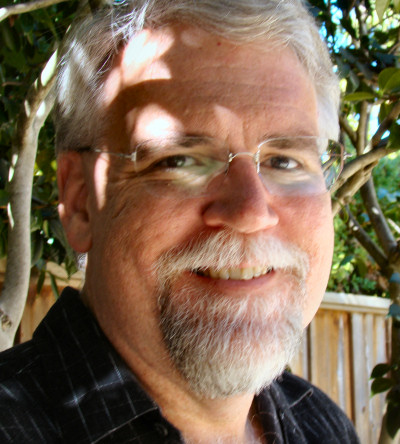 In September 2008, I began working on an in-depth history of the early online virtual world called Lucasfilm’s Habitat for 1UP.com. After delays in hearing back from Chip Morningstar (one of the game’s co-creators) and an unexpected death in my wife’s family, the article got the kibosh. It’s probably for the best, because I barely knew what I was doing back then.
In September 2008, I began working on an in-depth history of the early online virtual world called Lucasfilm’s Habitat for 1UP.com. After delays in hearing back from Chip Morningstar (one of the game’s co-creators) and an unexpected death in my wife’s family, the article got the kibosh. It’s probably for the best, because I barely knew what I was doing back then.
Along the way, I did manage to interview Habitat’s other main creator, F. Randall (“Randy”) Farmer via email. Farmer didn’t answer half of my most probing development questions (he kept pointing to an earlier piece over on Gamasutra), but what he did answer is pretty interesting.
 Some of this information be recounted elsewhere by now — I think more articles have been written about Habitat since 2008 — but I’m publishing my complete interview here in the hopes that it may help someone else with research about Habitat in the future.
Some of this information be recounted elsewhere by now — I think more articles have been written about Habitat since 2008 — but I’m publishing my complete interview here in the hopes that it may help someone else with research about Habitat in the future.
10 DAYS OF VINTAGE: Day 3

Personal Background
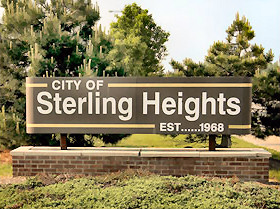 Benj Edwards: When and where were you born?
Benj Edwards: When and where were you born?
Randy Farmer: 1961, in Sterling Heights, Michigan — 20 miles north of the center of Detroit. I moved to California in 1980, a year after I graduated High School. I wanted to work in Silicon Valley.
BE: When did you first meet Chip Morningstar?
RF: During the interview process for a job at Lucasfilm Games (now known as LucasArts). I didn’t get the job. Later, I was called in to do a contract to port Koronis Rift to the Apple ][.
BE: What was the first personal computer you ever used?
RF: Commodore Pet. I first owned a TRS-80. But before both of those I had been programming HP2000 series minicomputers using ASR-33 teletype and DecWriter terminals.
BE: When did you start working at Lucasfilm?
RF: Late 1983. Apple ][ Koronis Rift shipped in 1984.

Habitat Development
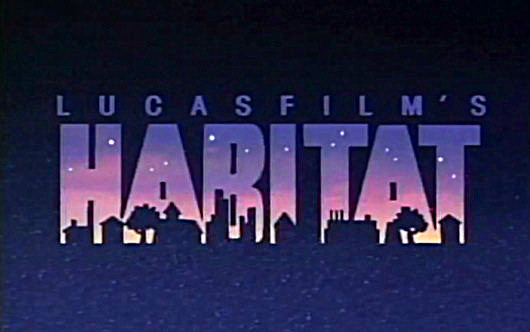 BE: Whose first thought of the Habitat concept?
BE: Whose first thought of the Habitat concept?
RF: This part of Habitat history is recounted in this Gamasutra article.
Chip wrote a blog post about it, but the online edition was lost earlier this year with a disk crash. He should have a backup of the original text, though.
BE: Is it true that Habitat was initially titled “Microcosm?”
RF: Yes. Microcosm was the working name. It was considered too geeky – it sounded like some sort of science experiment.
BE: What was your official role in Habitat’s development?
RF: Initially I was the lead client developer. There were several specialists contributing to the client side, including Aric Wilmunder who was in charge of the graphics engine, and Kevin Furry who provided the disk driver and helped with interrupt coding for things like the Lucasfilm proprietary hardware/software debugging tools.
I wrote the virtual object memory manager, communications protocol, music driver, and the UI code. Eventually I started to contribute to all parts of the product – designing and coding the frontend and backend of numerous objects.
BE: What do you consider your biggest contribution to the project?
RF: Probably the biggest thing I did was incrementally become the chief world designer and community manager. This ultimately lead to me encouraging Chip to co-write “The Lessons of Lucasfilm’s Habitat” with me in 1990 — forever cementing Lucasfilm’s Habitat as the first virtual world.
BE: What was the atmosphere like in your office during the creation of Habitat?
RF: Working for Lucasfilm Games, under Steve Arnold was awesome. Everything you might guess – highly collaborative, long hours, lots of playing with cool new gadgets, challenging ourselves to do the impossible, and achieving it! We built the first virtual world in 64k of ram, 100k of disk, and modems that could send only 30 characters per second.
What’s not to like?
BE: What obstacles, if any, did you face while developing Habitat?
 RF: 64k of ram, 100k of disk, and modems that could send only 30 characters per second. Ignorance of the impossible was the only way we beat these requirements. That and three years of development.
RF: 64k of ram, 100k of disk, and modems that could send only 30 characters per second. Ignorance of the impossible was the only way we beat these requirements. That and three years of development.
Bi-coastal development – QuantumLink was in Vienna Virginia – so I got up very early every morning for the last year of the project to coordinate with our remote server engineer: Janet Hunter.
The Commodore 64: “No two alike!” – it turns out that the chips in the computer we were asking to do the amazingly complicated task had bugs in them that caused some of them to crash at the chip level! This would have been something we could have ignored over time (since there were newer generations of the chips) if it weren’t for the fact that new C64s were still being shipped with the old chips. What cheapskates! So we had to rework the software to work with all chips. This is why some of the early screen shots look a little different than archival footage of the production version. I still remember the day when Dan Hite of EA suggested I spray the display chip with freon and watch Habitat crash.
BE: Did you face any significant opposition from Lucasfilm management to start or complete the Habitat project?
RF: In those days, Lucasfilm Games was kinda like the parable of Stone Soup – and Steve Arnold had the stone. He was able to get other companies to fund the development, so Lucasfilm was very supportive of the project. Again, see Chip for a better view of this.
BE: How much did George Lucas know about Habitat? Did he ever get on Habitat himself?
RF: There is a video where we created a George Lucas avatar for the company annual all-hands meeting — does that count?

Habitat Design Decisions
BE: Did MUDs or other multi-user text worlds have any influence on Habitat’s development?
RF: Strangely, I don’t think so. This was pre-web and though Lucasfilm was on the early internet for email and participated in Usenet netnews. It wasn’t until we wrote The Lessons that we got connected to that community. It was influenced by my personal experience in writing the mutiplayer-text-based Star Trek inspired SPB when I was in high school in the late 1970s. That initial experience taught me how social multiuser computing could be. As Richard Bartle says, there isn’t a single family tree for MUDs/MMORGS – the idea was in the air many places at the same time.
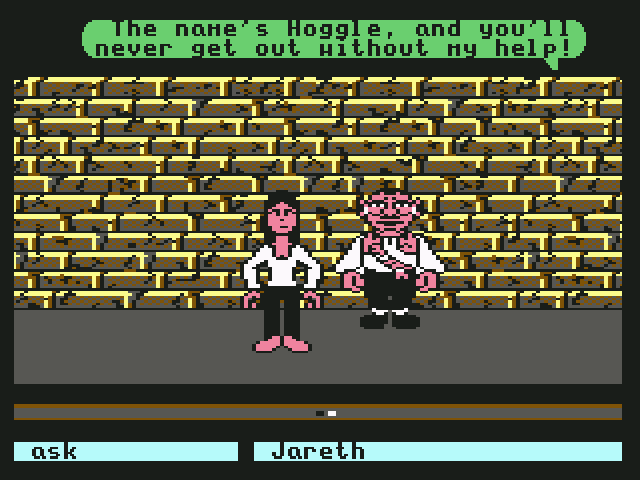 BE: I’ve seen screenshots of Lucasfilm Games’ Labyrinth: The Computer Game, and its interface looks uncannily similar to Habitat. What influence did the two titles have on each other?
BE: I’ve seen screenshots of Lucasfilm Games’ Labyrinth: The Computer Game, and its interface looks uncannily similar to Habitat. What influence did the two titles have on each other?
RF: They shared the same core animation engine, developed by Charlie Kellner, Aric Wilmunder, and Ron Gilbert.
BE: Were any LucasFilm employees involved in the development of both Labyrinth and Habitat?
RF: Most of the staff touched the project in various ways. We shared a lot of code.
BE: Did the development of Habitat have any influence on the graphical presentation of Maniac Mansion, or is it the other way around?
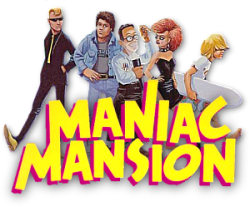 RF: Habitat was started before Maniac Mansion. I remember discussing the design with Ron at some length. It’s still one of my all time favorites. Maniac started with much of the shared animation and driver code, but went a different way — a scripting engine to drive the action. It was pretty revolutionary at the time.
RF: Habitat was started before Maniac Mansion. I remember discussing the design with Ron at some length. It’s still one of my all time favorites. Maniac started with much of the shared animation and driver code, but went a different way — a scripting engine to drive the action. It was pretty revolutionary at the time.
BE: In turn, were those titles originally inspired by Sierra graphic adventure games like King’s Quest?
RF: There was a great debate about the design differences between King’s Quest and Maniac. Check Ron’s blog “Grumpy Gamer” for the archive recap. http://grumpygamer.com/2152210
BE: Why the Commodore 64?
RF: Clive Smith, an executive at Commodore was a key driving force in putting together the three-way deal between Lucasfilm, Quantum Computer Services, and Commodore. Chip has the details.
BE: Why Quantum Link? Did you offer Habitat to other online services?
RF: It didn’t work like that back then. We were co-inventing the genre of 3rd party created multiplayer games. Besides us, there was Simutronics and PFMagic.

The Lessons of Habitat
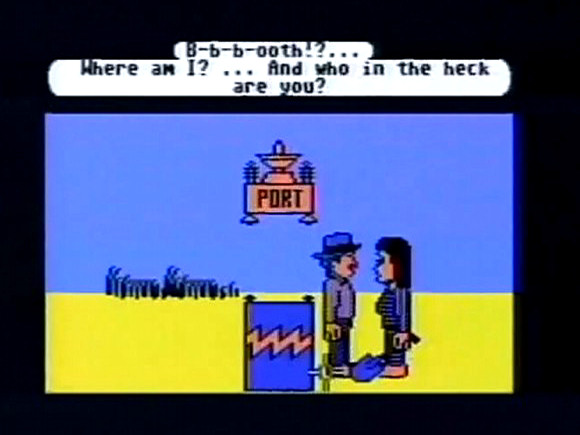 BE: Later multi-user systems like Ultima Online had huge problems sorting out rampant player killing (“PKing”), which ruined the experience for some people, while it made the experience for others. Was player killing a big problem in Habitat? Do you you think those later PK problems were presaged, in a way, by Habitat?
BE: Later multi-user systems like Ultima Online had huge problems sorting out rampant player killing (“PKing”), which ruined the experience for some people, while it made the experience for others. Was player killing a big problem in Habitat? Do you you think those later PK problems were presaged, in a way, by Habitat?
RF: Habitat had what you would now call PK-zones and safe zones. There were very few killing zones in the released game Club Caribe. Were there problems? Oh yeah. Read Habitat Anecdotes, “The Dungeon of Death.”
BE: I’ve read many times that Habitat consisted of 20,000 regions, or individual screens. Were those 20,000 regions mostly repeating streets or player houses, or did you guys really create 20,000 unique locals?
RF: Each avatar was hatched with a personal room. We called it a “turf.” Those were generated from a pool of templates, and customizable by the users: they could paint items, reposition/orient them, delete them, and purchase items for tokens and ‘glue’ them into their homes. So, we only generated a few hundred unique locations by hand. The users then turned their turfs into much richer locales.

Club Caribe
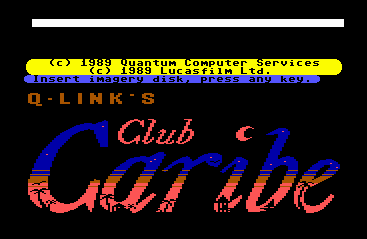 BE: What were the main differences between Club Caribe and Habitat?
BE: What were the main differences between Club Caribe and Habitat?
RF: Almost all of the fantasy and combat elements were stripped out. No wands, guns, monster heads, special bodies, etc. These were all eventually added back into the game incrementally. In effect, upgrades without changing the client software at all (which was no longer possible, since the team that built it had left Lucasfilm by the time Club Caribe shipped.)
BE: Why was Habitat Scaled Down to Club Caribe?
RF: Supposedly to make it easier for people to understand. Chip called it “Club Metaphor” because Q-Link thought that it was a better way to get customers into the idea of what we now call a social virtual world. I know it’s hard to fathom now, but their marketing department was having a huge problem explaining what the product was in 25 words or less.
BE: Who made the decision to end Habitat and begin Club Caribe?
RF: Quantum wanted the changes. In the end it made little difference as the beta had gone on for over a year and the vast majority of active users demanded that it morph back into the wild-and-wooly place it had been.
BE: How did Club Caribe get its name?
RF: Q-Link marketing.
BE: What was your role in creating Club Caribe?
RF: Chip left Lucasfilm several months before I did, so I did the minor changes required to rebrand the software. I also trained the new guy in charge – a somewhat famous name in games now: Rob Martyn. Check his MobyGames page — his first credit is Habitat.

The Possibility of Recreating Habitat
 BE: Have you ever heard of Quantum Link Reloaded? It’s a fan-run Q-Link service that was reverse-engineered from the original Q-link.
BE: Have you ever heard of Quantum Link Reloaded? It’s a fan-run Q-Link service that was reverse-engineered from the original Q-link.
RF: I’d heard of it. Most of Q-Link was run on what we’d now think of as a simple chat room server. Habitat (and Rabbit Jack’s Casino) took that base software up a few knotches.
BE: Would you be willing to help recreate Habitat or Club Caribe so they could add it to their service?
RF: Actually, I helped do this once already – perhaps you heard of it? WorldsAway. [smiley face]
There’s no real reason that this should be duplicated on top of the old Q-Link stuff. Habitat would be pretty easy to rebuild (esp. if the bitmaps could be pulled off the original disk) with a toolkit like the one made by a company that I advise: Metaplace.com. Import the art, and code up the UI and Objects. Probably would take only a few man-months.
BE: Do you have the source code for the Habitat C64 client software or the server software? Would you be willing to share it with the Quantum Link Reloaded project?
RF: No. Even if I did, I couldn’t admit it or share it. It’s proprietary. Every couple of years folks ask me this about The Palace as well. It’d be easier to do it from scratch now anyway. You don’t want to translate assembler to LUA. Trust me.
BE: Do you still have the Habitat server software anywhere? Could it be emulated or recompiled to run on a more modern machine?
RF: See the above comment.
BE: Do you have any backups of the “world state” from Habitat or Club Caribe?
RF: Nothing interesting. Some paper maps maybe. Look to the fans for more interesting stuff.

Legacy & Today
BE: How has being involved with Habitat influenced the course of your life?
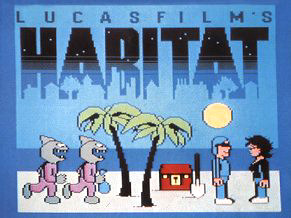 RF: Creating Habitat and especially writing and sharing “The Lessons” was a major milestone in my professional career. Ever since the late 1970s, I have wanted to use computers as a communications medium to bring people together around shared interests. From there I would go on to create commercial spaces and then generalize my skills to cover just about every kind of social media that exists on the nets.
RF: Creating Habitat and especially writing and sharing “The Lessons” was a major milestone in my professional career. Ever since the late 1970s, I have wanted to use computers as a communications medium to bring people together around shared interests. From there I would go on to create commercial spaces and then generalize my skills to cover just about every kind of social media that exists on the nets.
BE: Do you ever feel like your legacy with Habitat unfairly overshadows your other work?
RF: No, not really. The spirit of innovation I developed on that project has come with me everywhere I’ve gone since then. I’m still building stuff before it’s time, and now I know I’ll never stop. In short, I keep running forward, away from the shadows.
It’s nice, once in a while, to stop and reflect: “Yeah, we did good”; and then head once again into the breach.
BE: What was Habitat’s greatest impact on the later development of other online worlds?
RF: I’ve been told that us talking about Habitat inspired many who had visions of building online worlds into doing the hard work required to realize them. More than fifty books reference the Habitat papers. More than 100 mention the product.
Chip coined the modern usage of the word Avatar. We invented a concept. Not bad.
BE: Is there anyone who you feel should get more credit for Habitat or Club Caribe, but is often overlooked by history?
RF: There were so many that worked on the project. The original Habitat manual has a good credit list, as does the Club Caribe documentation. I’m sure that overlooks dozens of important people.
Since about the time of Meridian 59, people started crediting the beta testers by name. I like this practice, and wish we’d done it for Habitat. So — that’s who I’ll say is missing: The Habitat Beta testers, who were tireless in their pursuit of making it the coolest thing, evar!
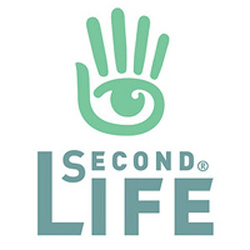 BE: Do you ever get on Second Life?
BE: Do you ever get on Second Life?
RF: Sometimes, but I don’t find it very compelling. I’ve written pretty extensively about it on Habitat Chronicles. Note that I did do some consulting for them more than 5 years ago. The UI design I did for them then was implemented pretty quickly, but has run it’s course.
BE: What’s your relationship with Chip Morningstar like these days?
RF: Chip and I have worked together on and off for over 20 years, including starting three companies together. Until earlier this year we both worked in the same group at Yahoo!. I’m certain we’ll work together again soon. It’s inevitable, like the rising of the tide. It is only a matter of time.





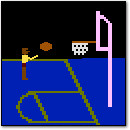
November 4th, 2015 at 3:16 pm
Habitat II is super weird. Came out for PCs and the Saturn I believe.
http://web.archive.org/web/19970525135506/http://www.fujitsu.co.jp/hypertext/fmworld/special/habitat2/index.html
November 4th, 2015 at 3:20 pm
I always wanted to get on Habitat II. If I’m not mistaken, that formed the basis of WorldsAway in the US. I was very involved in WorldsAway from its launch in 1995 until 2001 — expect to read more about that soon.